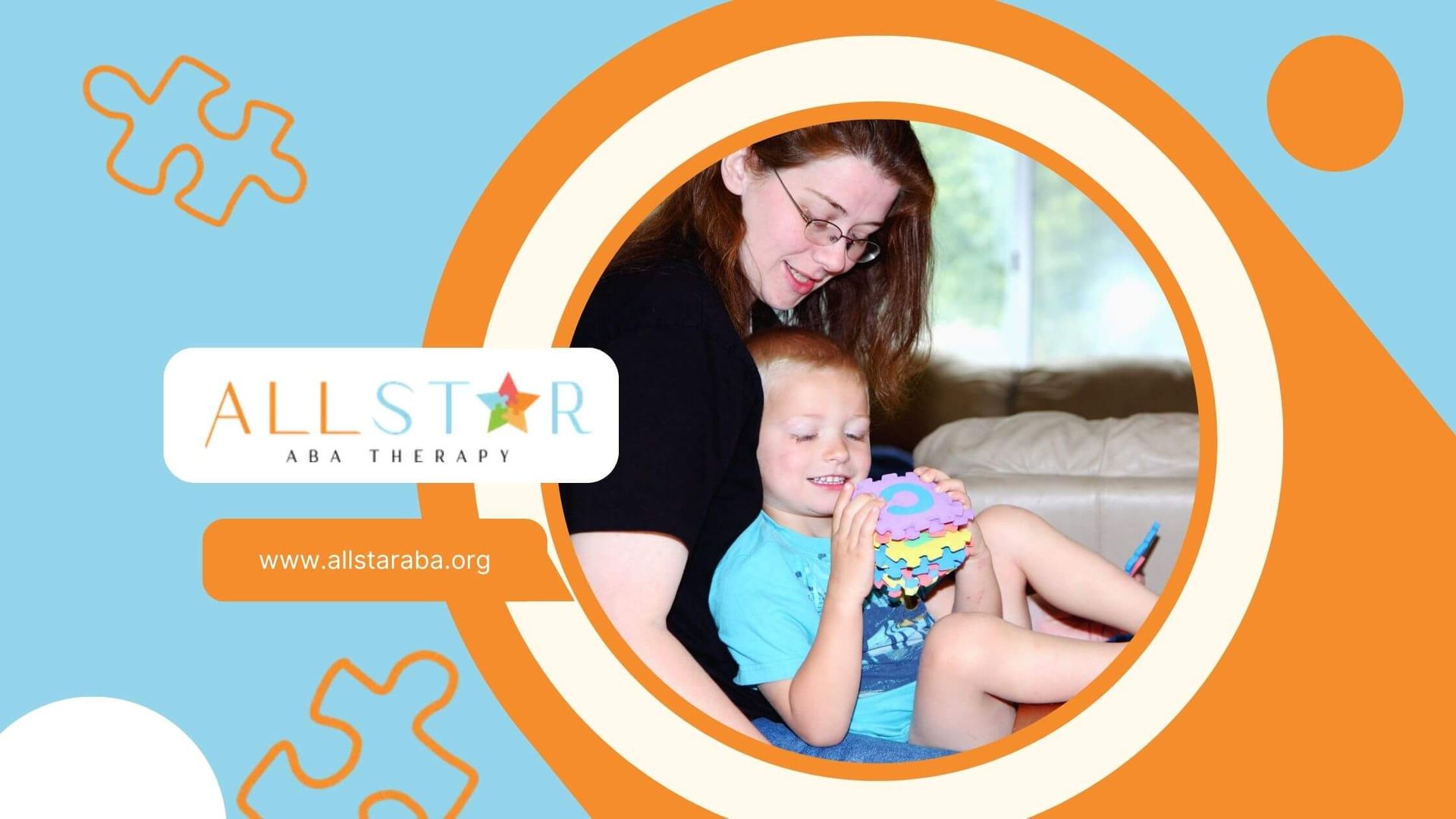New Paragraph
Exploring What Stimming Means in Autism
Stimming, a term commonly used in the autism community, refers to repetitive behaviors or movements that individuals with autism often engage in. These self-stimulatory behaviors can serve various purposes, such as sensory regulation, stress relief, or communication. Understanding the nature of stimming is crucial for supporting autistic individuals and challenging harmful stereotypes.
In this article, we'll delve into the world of stimming, exploring its different forms, functions, and how to foster positive stimming behaviors. Let's break down the misconceptions and embrace the unique ways in which autistic individuals express themselves through stimming.
Understanding Stimming in Autism
Definition of Stimming
Stimming, short for self-stimulatory behavior, refers to a range of repetitive movements or sounds commonly observed in individuals diagnosed with autism spectrum disorder (ASD). These behaviors can include hand flapping, rocking back and forth, spinning, jumping, and making repetitive noises. Stimming serves various purposes for individuals, such as providing sensory reinforcement, regulating sensory input, and even producing endorphins in the nervous system.
The actions associated with stimming can become excessive or obtrusive in some individuals, but they are often essential for managing emotions and sensory experiences.
Importance of Stimming
Stimming plays a crucial role in helping individuals with autism manage and regulate their sensory experiences. For many, these behaviors provide comfort and assist in blocking out overwhelming stimuli, such as bright lights or loud noises. Autistic adults have also emphasized stimming as an adaptive mechanism that aids in soothing or communicating intense emotions or thoughts.
The significance of stimming can be summarized in the following key points:
| Purpose | Description |
|---|---|
| Sensory Regulation | Helps manage sensory overload and provides comfort in overwhelming situations. |
| Emotional Communication | Serves as a way to express or communicate feelings and thoughts. |
| Coping Mechanism | Functions as a strategy to cope with stress and anxiety. |
Understanding stimming is vital for parents and caregivers, as it may enhance the support provided to autistic individuals. Recognizing stimming behaviors as a natural part of autism can lead to greater acceptance and understanding within communities.
Types of Stimming Behaviors
Stimming, or self-stimulatory behavior, can manifest in various forms, often categorized by the senses involved. Understanding these types can provide insight into what stimming means in autism and how it supports individuals in managing their sensory experiences.
Visual Stimming
Visual stimming involves behaviors that engage the visual senses. This type of stimming can include actions such as flicking fingers, staring at lights, or watching moving objects. Individuals may find comfort or excitement in visual patterns and lights.
| Example Behaviors | Description |
|---|---|
| Flicking Fingers | Rapidly moving fingers in front of the eyes. |
| Staring at Lights | Fixating on bright or moving light sources. |
| Watching Patterns | Observing repetitive visual patterns, such as spinning wheels. |
These behaviors can help individuals focus, reduce anxiety, or provide sensory input when overwhelmed.
Auditory Stimming
Auditory stimming encompasses behaviors that involve sound. This can include humming, tapping, or repeating specific sounds or phrases. These actions often provide auditory feedback that individuals find soothing or satisfying.
| Example Behaviors | Description |
|---|---|
| Humming | Making musical sounds without words. |
| Tapping | Repeatedly striking a surface or object. |
| Repeating Sounds | Mimicking noises or phrases, sometimes from media. |
Auditory stimming can serve to help regulate emotions and provide a sense of control over one's environment.
Tactile Stimming
Tactile stimming pertains to behaviors that engage the sense of touch. Individuals may rub their hands together, feel different textures, or engage in repetitive motions that involve physical contact with surfaces.
| Example Behaviors | Description |
|---|---|
| Rubbing Hands | Moving hands against each other or surfaces. |
| Feeling Textures | Touching various materials to experience different sensations. |
| Hand Flapping | Rapidly moving hands in the air. |
These tactile behaviors can assist individuals in self-soothing, managing anxiety, and exploring their surroundings through touch.
Stimming behaviors can vary significantly among individuals with autism. Not all individuals engage in every type of stimming, and the reasons behind these behaviors can be multifaceted, including coping with sensory overload and enhancing focus. Understanding these types can foster greater acceptance and support for those who engage in stimming.
Causes and Triggers of Stimming
Understanding the causes and triggers of stimming behaviors in individuals with autism is essential for recognizing their significance and providing appropriate support. Stimming often serves as a coping mechanism, addresses sensory processing challenges, and aids in emotional regulation.
Coping Mechanisms
Stimming behaviors can act as effective coping mechanisms for autistic individuals. These behaviors may be triggered by various stimuli such as stress, anxiety, excitement, or boredom. For instance, vocal stimming, which can include repeating sounds or phrases, allows individuals to explore and interact with their environment while creating a sensory experience.
| Trigger | Stimming Behavior Examples |
|---|---|
| Stress | Hand flapping, rocking |
| Anxiety | Vocalizations, pacing |
| Excitement | Jumping, clapping |
| Boredom | Fidgeting, repetitive movements |
Sensory Processing Challenges
Many autistic individuals face sensory processing challenges, which can lead to overstimulation or understimulation. Stimming can be a response to overwhelming sensations such as loud noises, strong odors, bright lights, or specific textures. Engaging in stimming activities helps individuals manage these sensory inputs and regain a sense of control.
| Sensory Input | Stimming Responses |
|---|---|
| Loud Noises | Ear covering, humming |
| Bright Lights | Eye covering, blinking |
| Strong Odors | Nose wrinkling, moving away |
| Textures | Rubbing hands, tapping fingers |
Emotional Regulation
Stimming is often utilized as a tool for emotional self-regulation. It allows individuals to express and manage their emotions, particularly when feeling overwhelmed or anxious. The repetitive nature of stimming provides comfort and helps to calm the nervous system. Understanding the role of stimming in emotional regulation can foster a more supportive environment for autistic individuals.
| Emotional State | Stimming Behavior Examples |
|---|---|
| Overwhelmed | Deep breathing, rocking |
| Anxious | Nail biting, tapping |
| Excited | Jumping, clapping |
| Frustrated | Squeezing a stress ball |
By recognizing these causes and triggers of stimming, parents and caregivers can better support autistic individuals in navigating their sensory experiences and emotional landscapes.
Impact of Stimming on Individuals
Stimming behaviors, while often a natural response for individuals with autism, can have significant effects on various aspects of their lives. This section explores how stimming impacts social interactions, daily functioning, and learning and development.
Social Interactions
Stimming can influence social interactions in various ways. For example, vocal stimming may interfere with an individual's ability to engage in reciprocal conversations, respond appropriately to social cues, or form friendships. This can hinder participation in group activities and affect attendance at school.
| Effect on Social Interactions | Description |
|---|---|
| Communication Skills | Difficulty in engaging in conversations. |
| Forming Friendships | Challenges in building and maintaining relationships. |
| Group Participation | Limited involvement in social activities. |
Daily Functioning
While stimming can be a coping mechanism that helps regulate senses and manage sensory overload, it may also interfere with daily functioning. When stimming behaviors become excessive, they can impede the ability to perform everyday activities and lead to clinically significant impairment.
| Impact on Daily Functioning | Description |
|---|---|
| Everyday Activities | Difficulty completing routine tasks. |
| Safety Concerns | Risk of injury or self-harm from certain stimming behaviors. |
| Need for Medical Attention | Possible requirement for intervention if stimming leads to complications. |
Learning and Development
Stimming can affect learning and development by interfering with educational experiences. Some forms of self-stimulation may disrupt focus during lessons or lead to challenges in absorbing information. While it's important to recognize stimming as a necessary behavior for many individuals with autism, excessive stimming that hinders learning may require medical attention.
| Learning and Development Impact | Description |
|---|---|
| Disruption in Learning | Challenges in maintaining attention during lessons. |
| Impaired Skill Acquisition | Potential hindrance in acquiring new skills. |
| Need for Support | May require additional educational support to facilitate learning. |
Understanding the impact of stimming on social interactions, daily functioning, and learning is crucial for creating supportive environments for individuals with autism. Recognizing the balance between allowing stimming as a coping mechanism and addressing when it becomes excessive is essential for promoting overall well-being.
Managing and Supporting Stimming
Understanding how to effectively manage and support stimming behaviors is crucial for autistic individuals and their families. This section discusses strategies for identifying triggers, providing sensory tools, and seeking professional help.
Identifying Triggers
Identifying the triggers that lead to increased stimming is an essential step in managing these behaviors. Common triggers include:
| Trigger Type | Description |
|---|---|
| Overstimulation | Loud noises, bright lights, or crowded spaces |
| Anxiety and Stress | Situations that create feelings of unease |
| Boredom | Lack of engaging activities or stimulation |
Creating a safe and sensory-friendly environment can help mitigate these triggers. Acceptance and understanding of stimming behavior also play a significant role in supporting individuals who stim.
Providing Sensory Tools
Providing sensory tools can help individuals with autism manage their stimming behaviors effectively. These tools can offer alternative sensory input and reduce the need for excessive stimming. Some effective sensory tools include:
| Sensory Tool | Purpose |
|---|---|
| Fidget toys | Provide tactile stimulation |
| Weighted blankets | Offer calming pressure |
| Noise-canceling headphones | Reduce auditory overstimulation |
| Sensory swings | Provide vestibular input |
| Trampolines | Offer opportunities for physical activity |
Incorporating regular opportunities for sensory input throughout the day, such as jumping on a trampoline or carrying heavy objects, can help balance the need for self-regulation with daily activities.
Seeking Professional Help
While stimming is a natural behavior for individuals with autism, excessive stimming that interferes with daily functioning or leads to injury may require professional assistance. Seeking medical help can provide effective strategies for managing stimming behaviors without eliminating them entirely. Professional support can include:
| Type of Professional | Role |
|---|---|
| Occupational therapist | Help develop sensory integration strategies |
| Behavioral therapist | Provide behavior modification techniques |
| Psychologist | Address underlying anxiety or emotional issues |
Using positive reinforcement and teaching alternative behaviors can also be beneficial when managing vocal stimming.
Conclusion
Stimming is a natural and often necessary part of life for many autistic individuals. By understanding its functions and providing appropriate support, we can create inclusive environments that celebrate diversity and encourage personal growth.
All Star ABA is dedicated to empowering individuals with autism to reach their full potential. Our comprehensive ABA therapy services address the unique needs of each child, including strategies to manage stimming behaviors and promote positive communication. With a focus on early intervention and evidence-based practices, we create a supportive environment for growth and development.
Contact All Star ABA today to learn more about our best ABA therapy services in Maryland and how we can support your child's journey.
Need Support?
We're Here to Help!
Our experienced team is ready to assist you. Reach out today to discuss how we can support your child's development and well-being.
Get started with expert ABA therapy today.








